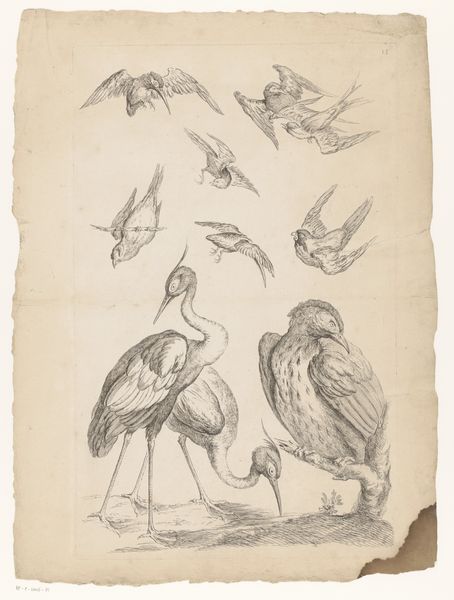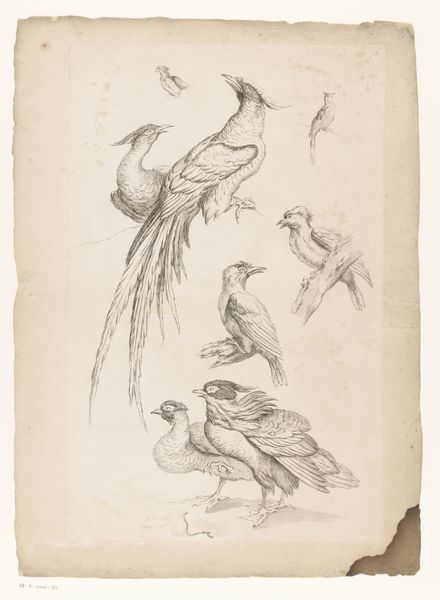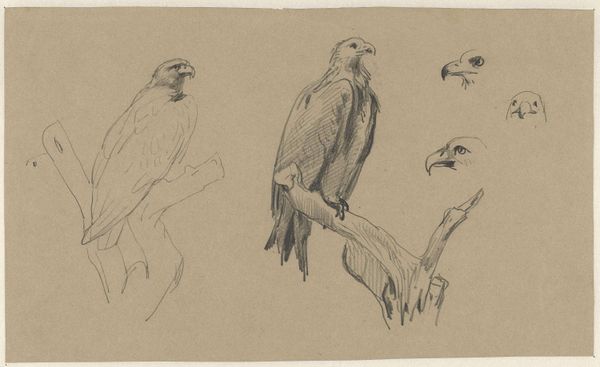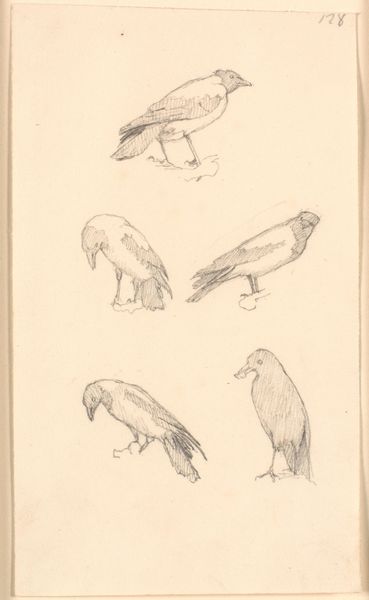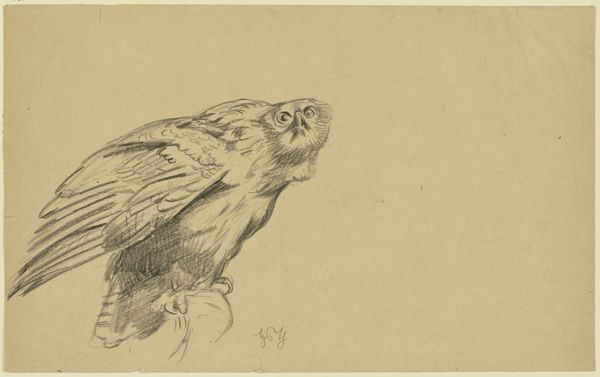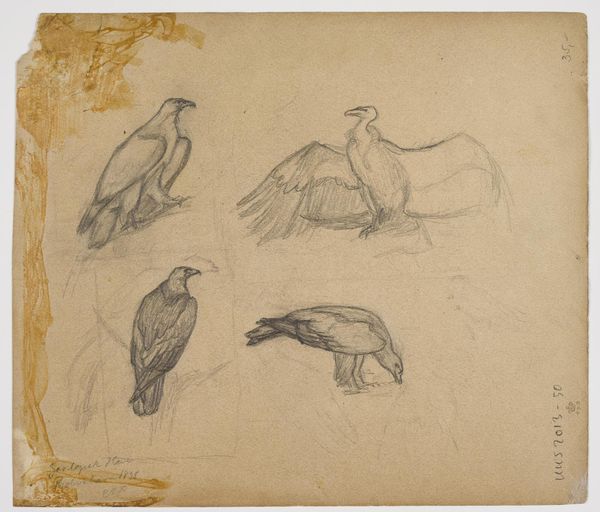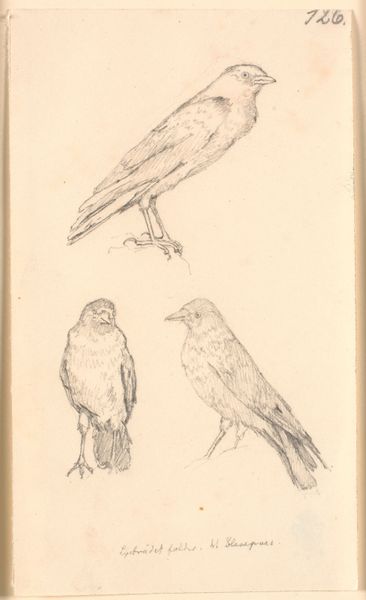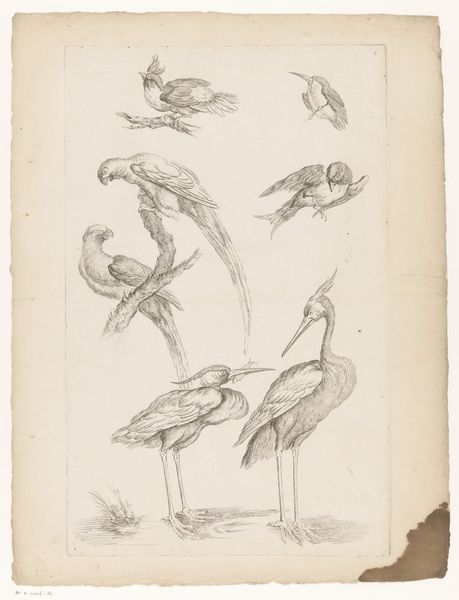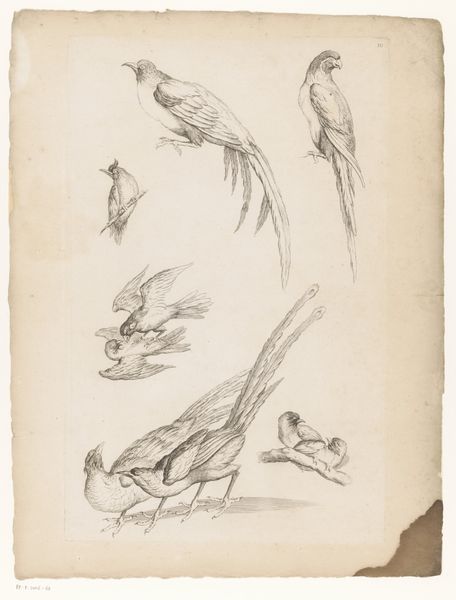
Dimensions: 188 mm (height) x 268 mm (width) (bladmaal)
Curator: Right, let's discuss Nicolai Abildgaard's "Studie af tre ugler", which roughly translates to "Study of Three Owls". Created sometime between 1743 and 1809, it's an ink drawing on paper. Editor: Immediately, the sketch-like quality draws me in. There's a sense of vulnerability to these birds; they’re caught mid-thought, or mid-swoop, but undeniably expressive even in their rudimentary form. Curator: The drawing showcases Abildgaard's interest in animal studies, a common practice for artists developing their skills. The swift pen strokes, the way the ink bleeds slightly into the paper, all speak to the artist’s process, the labour inherent in artistic practice. These weren't finished artworks, but vital steps in the creation of something bigger, maybe? What can the artist tell us through them? Editor: Absolutely, and beyond technical skill, owls carry significant cultural weight. Often symbols of wisdom or even the ominous harbinger of ill-fortune in the 18th and 19th century; they could signify the growing enlightenment era and the decline of traditional, darker ways of thinking. Were people starting to rethink their allegiances at the time this piece was made? Curator: Or even something simpler – access. Abildgaard might be examining how nature reflects onto culture – a commentary on material realities where birds of prey and wisdom coexist? The quality of paper available, the production and affordability of ink... These aspects influenced artistic expression. Was it something available to most artists? How can an individual convey this new world of freedom that enlightenment suggested if the cost of art creation itself still suggests limits to that? Editor: I'd suggest it adds to a discourse already taking shape during the Enlightenment. It's important to acknowledge that this period was not universally emancipatory and benefitted the select few. I read a kind of resistance into the choice of this animal, too, in terms of identity and power. The owl is an intriguing focal point amidst a very complex discussion on class, artistic liberty and revolution. Curator: It makes one appreciate the material reality – the hand, the tool, the labour of creating this sketch in its moment and what we consider ‘worthy’ of consideration now. Editor: Indeed, considering these multiple dimensions definitely brings a richer understanding of not only the piece itself but its possible resonances as it appears today.
Comments
No comments
Be the first to comment and join the conversation on the ultimate creative platform.
